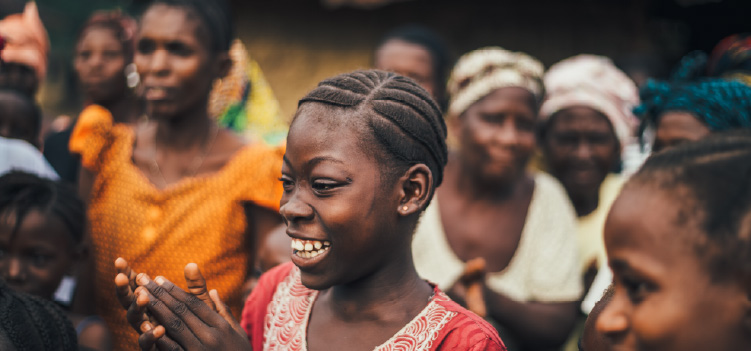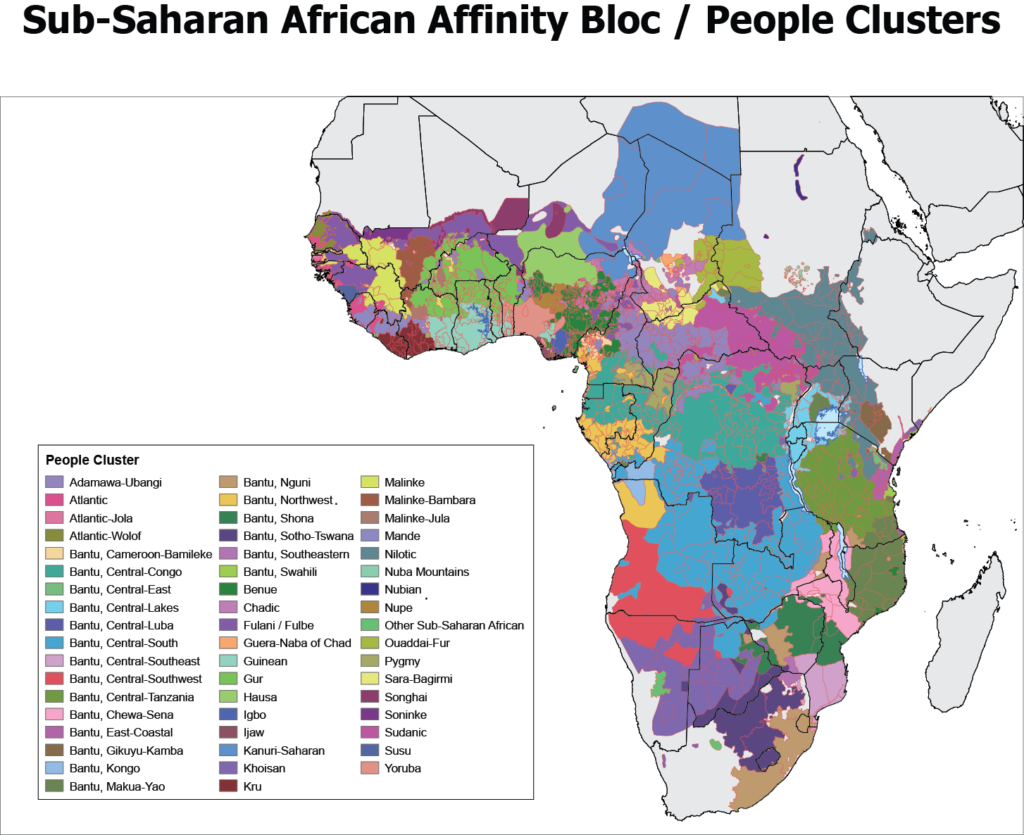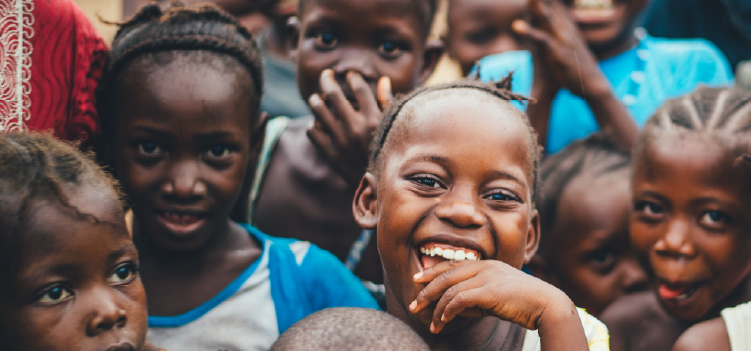Editor’s Note: This article is part 3 of a three-part series by Patrick Johnstone, author emeritus of Operation World, on the Sahel region. Read parts one and two.
The Sahel is also an area in which pioneer evangelism, Bible translation, and church planting are most challenging and most needed.

In my first and second articles, I laid out the current challenges to ministry in the Sahel and explained why we hear so little of the Sahel today. Its cry for help is drowned out by the deafening noise of COVID-19 and its aftermath, climate change disasters, and the catastrophic global impact of Russia’s invasion of Ukraine.
Yet, as a result of these non-African disasters, this region is suffering acutely from collapsing governments, famines, and wars sparked by water scarcity and ethnic and religious conflict. UN and Western efforts to eliminate these—whether through militaries or peacekeepers—will only worsen a growing refugee crisis.
The Sahel is also an area in which pioneer evangelism, Bible translation, and church planting are most challenging and most needed. In this third article, I will illustrate the above challenges and the unmet spiritual needs by highlighting one major people cluster—the Fulbe, also known as the Fulani.
People Clusters of the Sahel
To begin, let’s look at a brief overview of Sahelian people clusters and their religious demographics.[1] The sub-Saharan Africa region is home to 1,319 ethno-linguistic people groups and 37 people clusters.[2] The accompanying map shows the people clusters of the Sahel-Sudan belt.[3]
Notice that the home territories of these people clusters bear little resemblance to the European colonial boundaries imposed in the nineteenth century. It is hardly surprising that these countries have been plagued by so many internal conflicts.

Some 20 years ago I worked closely with The Joshua Project team to assess the entire list of peoples of the world. We used every bit of information we had to estimate the religious percentages of each people group such that their religious totals equalled the national figures used in Operation World. While these figures are meticulously researched, it must be stressed that they are estimates, and they do not take into account more recent discipling movements, which are becoming more significant in recent years.
This chart gives the results for each people cluster in the Sahel. The bars on the left represent the proportions of professing Christians, Traditionalists, and Muslims within each people cluster. The table to the right breaks these numbers down further by indicating how many people groups within each cluster fall into the given percentages of Christianity.

We also broke these numbers down further to find percentages for major streams of Christianity.[4] Though not represented in these figures, it is worth noting that the great majority of the Sahelian people cluster Christians are evangelical in theology.
Several insights from this information are important to note:
- The coastal forest-dwelling people clusters are largely Christian, and their homelands are far more densely populated. Theirs is the most urbanised part of the region.
- Nearly all Sahelian people clusters are almost entirely Muslim—many of these Muslims being members of Sufi Brotherhoods with a very different religious culture to mainline Sunni Muslims. A colleague has written a brilliant book on Sufi Muslims[5] which is well worth reading for those working among Sahel peoples.
- The largest clusters are the Hausa and Fulbe, followed by the Wolof, Soninke, Songhai, and Malinke.

The Fulbe People Cluster, Past and Present
The Fulbe people cluster is large, and its 16 distinct ethnic groups live in every country of the Sahel. They number around 41 million in 2023, but only 2 of the 16 groups have more than 0.5 percent Christians.
This map shows these groups and their associated languages and dialects. They are the world’s largest nomadic cattle-herding people group, though they have settled in some areas. In some countries, the Fulbe have become the dominant people group, and some members of this group hold national leadership positions such as in northern Nigeria, Niger, and Guinea. About half of all Fulbe live in Nigeria. Their origins are obscure, but their generally lighter skin colour indicates a mixture of ![]() ancestral races, and their language family is strongest in Senegal.
ancestral races, and their language family is strongest in Senegal.

The Fulbe were prominent in expanding the spread of Islam in the Middle Ages, and most are Muslim today. Imagine the incredible impact the Fulbe could have for the gospel across the Sahel were there to be a great move to Christ among them.
For centuries, a symbiotic relationship existed between the nomadic herders and non-Fulbe agriculturalists, with the herders moving north in the summer rains and south in the dry winters, bringing their herds to pasture on harvested fields. In the process, they fertilized these fields with cattle manure. In recent years, this exchange has broken down due to population growth and the southwards advance of the Sahara Desert. This shift contributes significantly to the rising tensions and warfare between herders and farmers of the Sahel. It has also provided many recruits for the jihadist wars of ISIS, Al Qa’eda, and Boko Haram.
Work is underway among the Fulbe across the continent of Africa:
- WEC started a ministry among the Fulacunda of the Casamance in southern Senegal in the mid-1930s. Some have come to Christ since then, but 90 years later the breakthrough has yet to come.
- The Wodaabe Fulbe in Niger number around 800,000 today. They retain some of their pre-Islamic customs and are less strongly Muslim. In recent years, through the ministry of SIM and others, they have begun to respond to the gospel. In 1991, believers numbered around 60, but by 2011 this had grown to 1,000 with a number of churches among them.
- The Nigerian Fulbe are dominant in Nigeria’s northeast. Muslims have imposed shari’a law on the northern states they control. This has resulted in much persecution for Christians—both indigenous and southern immigrants. Yet over recent years, a rising number of Fulani have come to Christ as individuals and often in discipleship movements with ‘underground’ groups of believers.
From this look at one of the most prominent and unreached Sahelian peoples, we can glean insights about the dynamics at work in evangelistic efforts in this region today.
Increasingly, the workers will be from Africa, but this does not absolve the global church from its responsibility to participate in multi-cultural teams.

Challenges for the Future of the Sahel
While we are seeing fruit in some areas, many challenges remain. Here are some to consider:
- Workers: About 250 people groups in 25 people clusters in Africa south of the Sahara[6] are still in the least evangelized category with less than 0.5 percent Christians. A further 250 groups have less than 5 percent Christians. They need our prayer and the mobilization of Christian workers among them for pioneer church planting. Increasingly, the workers will be from Africa, but this does not absolve the global church from its responsibility to participate in multi-cultural teams.
- Technology: We must develop modern global strategies for the 30 people clusters of the Sahel—such as the Fulbe, Mande, Hausa, Nomadic Arabs, Somalis, etc. The ubiquitous use of cell phones in Africa makes this a vital component of ministry.
- Urbanization: Africa is becoming far more urban. The UN reckoned in 2006[7] that there would be 850 million Africans living in cities in 2050, but 40 percent would be living in squalid slums. How do we disciple these cities? Many millions of Sahel peoples will continue to migrate to the coastal cities, where they will undergo massive changes in culture, language, and lifestyle.
- Humanitarian crises: Continuing and growing crises will result in government failures, death, destruction, trauma, and famines. Many aid agencies cannot easily operate in the Sahel but their assistance is and will be desperately needed. We must devise new ways to minister to the desperate needs of those impoverished and displaced by the major upheavals in coming decades.
- Forced migration: The refugee crisis is likely to become far more severe in coming decades because of the upheavals and continuing population growth with massive internal displacements, cross-border refugees, and an increase of migration across the Sahara to Europe. This flow will be very hard to check.
- Bible poverty: Bible translation is an ongoing need. Africa has 2,110 languages but only 508 have a New Testament or Bible.[8] Africa remains one of the biggest challenges for Bible translation and associated literacy and video/sound programmes. This is largely a collaborative work of nationals with outsiders helping in relevant areas of expertise. The majority of the languages without Scriptures are likely to be extinct by 2100 since the majority of all education across the Sahel, even at the primary level, is in English, French, and Portuguese. Only one Sahel language—Hausa—is served by Google translate. Availability and wide use of the Bible in a local language is one of the most effective preventives against extinction.
- Corruption: For Africa to reverse the descent into even worse crises, the African church must challenge the widespread corruption and nepotism that cripples any effort for improvement. Christians in Africa must offer both an example of godly living and a challenge to the social, political, and economic life of their homelands and, in the process, provide the means to support the mission of the church.
- Prayer: In all of this, we must remember that intercession is the key ministry to bring about the changes and advancements of God’s kingdom.
Endnotes
- The following statistics are derived from the Joshua Project List as in 2010.
- In my 2011 book The Future of the Global Church, I categorize the world’s 13,000-17,000 people groups into 12 affinity blocs and 260 people clusters.
- This map excludes the massive Bantu super-cluster with 20 sub-clusters and 662 people groups in Central and Southern Africa. The boundaries of the concentrations of each people group are predominantly language boundaries and derived from the work of Global Mapping International and used by SIL in the Ethnologue.
- Categorized as Catholic, Orthodox, Protestant, Anglican, Indigenous, and Marginal
- Ted Collins. The Other Islam: Christian Witness to Mystical Muslims (Manchester, UK: The Higher Path, 2021)
- Excluding the Horn of Africa, which is home to a further 33 people groups
- See UN-HABITAT’s State of the World’s Cities 2006/7.
- Jason Mandryk, Operation World (Downers Grove, IL: IVP, 2010).

